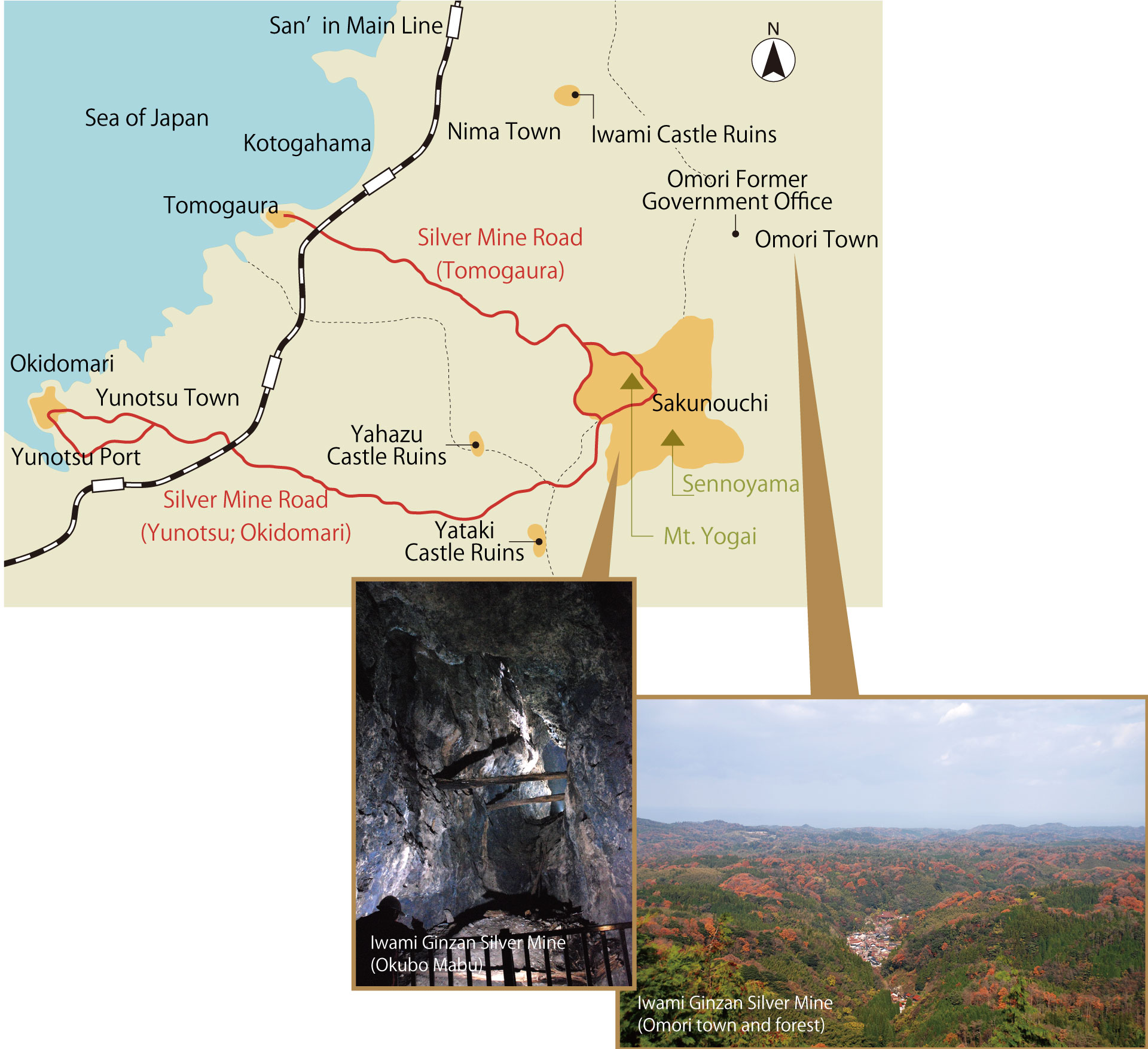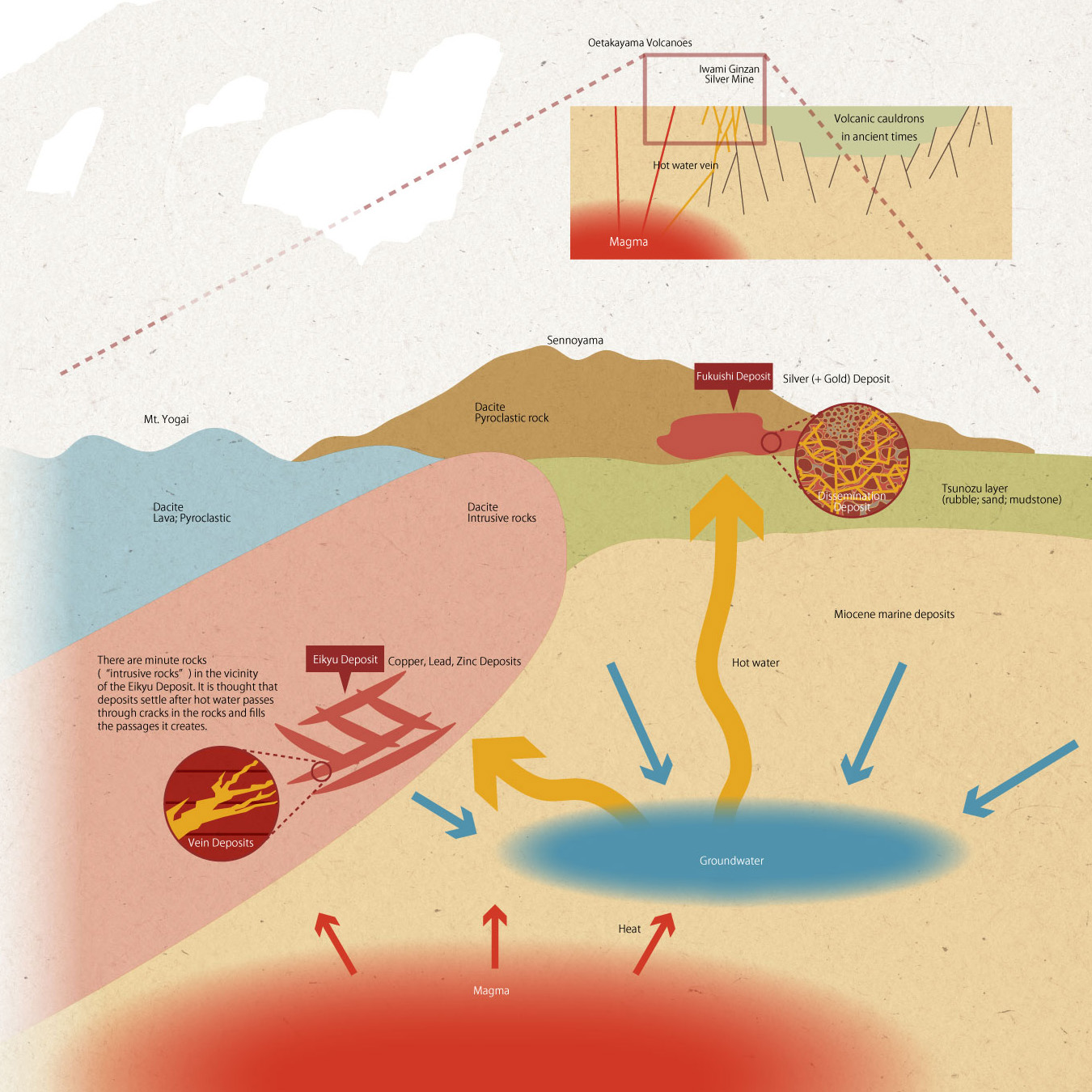Iwami Ginzan Silver Mine
Iwami Ginzan Silver Mine
The Iwami Ginzan Silver Mine was operated to coexist with nature, a factor contributing to the former mine’s registration as a UNESCO World Heritage Site in July 2007.
The Iwami Ginzan Silver Mine has two deposits, the Fukuishi and the Eikyu. The formation processes of these deposits differ. It is believed that both deposits were formed somewhat over 1,000,000 years ago.


Geological features and deposits of the Iwami Ginzan Silver Mine
Deposits are places where ore or other useful minerals are found. The Iwami Ginzan Silver Mine has two main deposits, known as the Fukuishi and the Eikyu. In both deposits, groundwater was heated by magma deep in the earth. This hot water rose, bringing about the deposit formation process.
Sennoyama, where the Fukuishi Deposit is found, is a mountain formed by accumulation of elements such as rubble and ash ejected by a volcano. The deposit was formed when hot water seeped into cracks and fissures between the rocks.
There are minute rocks (“intrusive rocks”) in the vicinity of the Eikyu Deposit. It is thought that deposits settle after hot water passes through cracks in the rocks and fills the passages it creates.
Iwami Ginzan Silver Mine (Okubo Mabu)
Iwami Ginzan Silver Mine (Omori town and forest)
Fukuishi Deposit
Silver (+ Gold) Deposit
Dissemination Deposit
Eikyu Deposit
Copper, Lead, Zinc Deposits
Vein Deposits